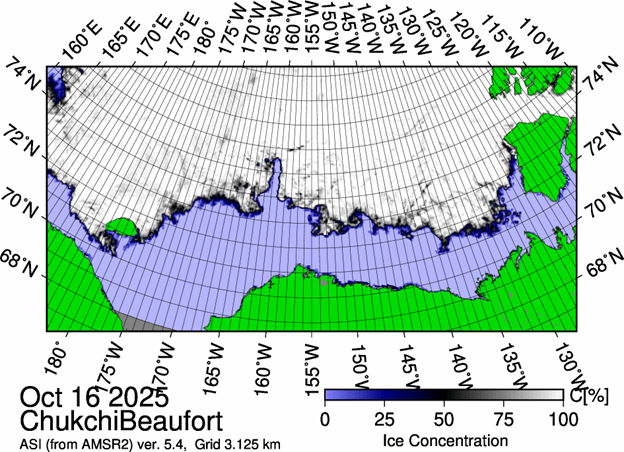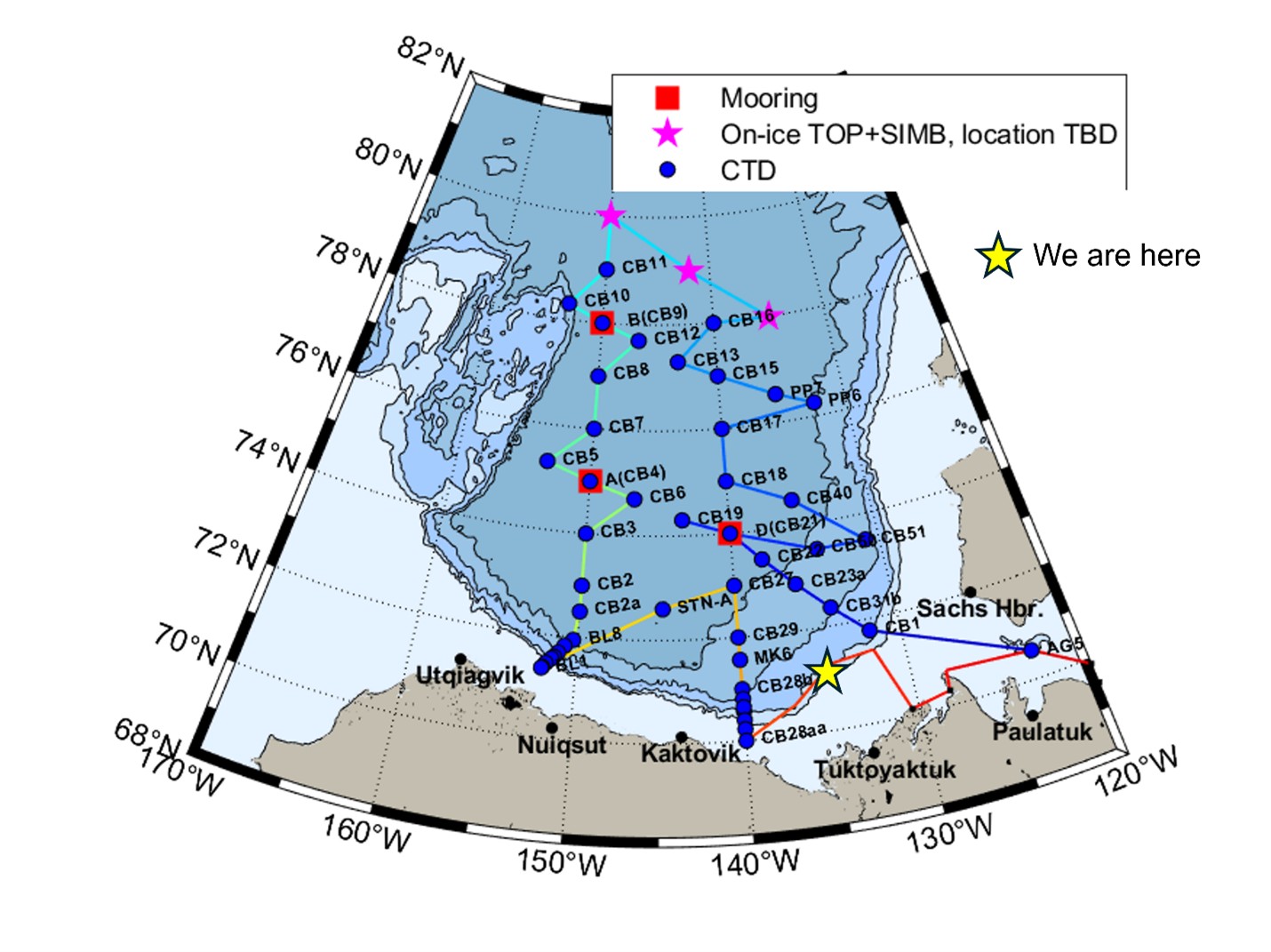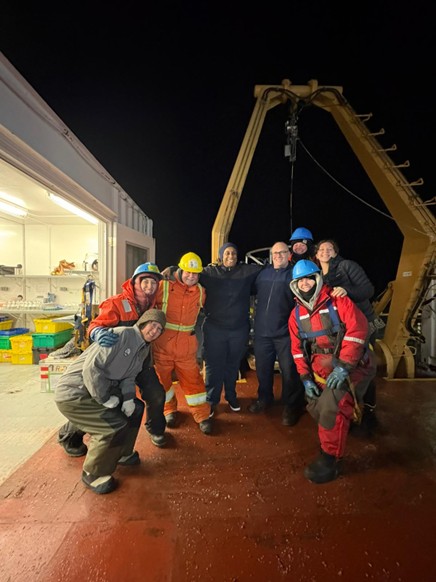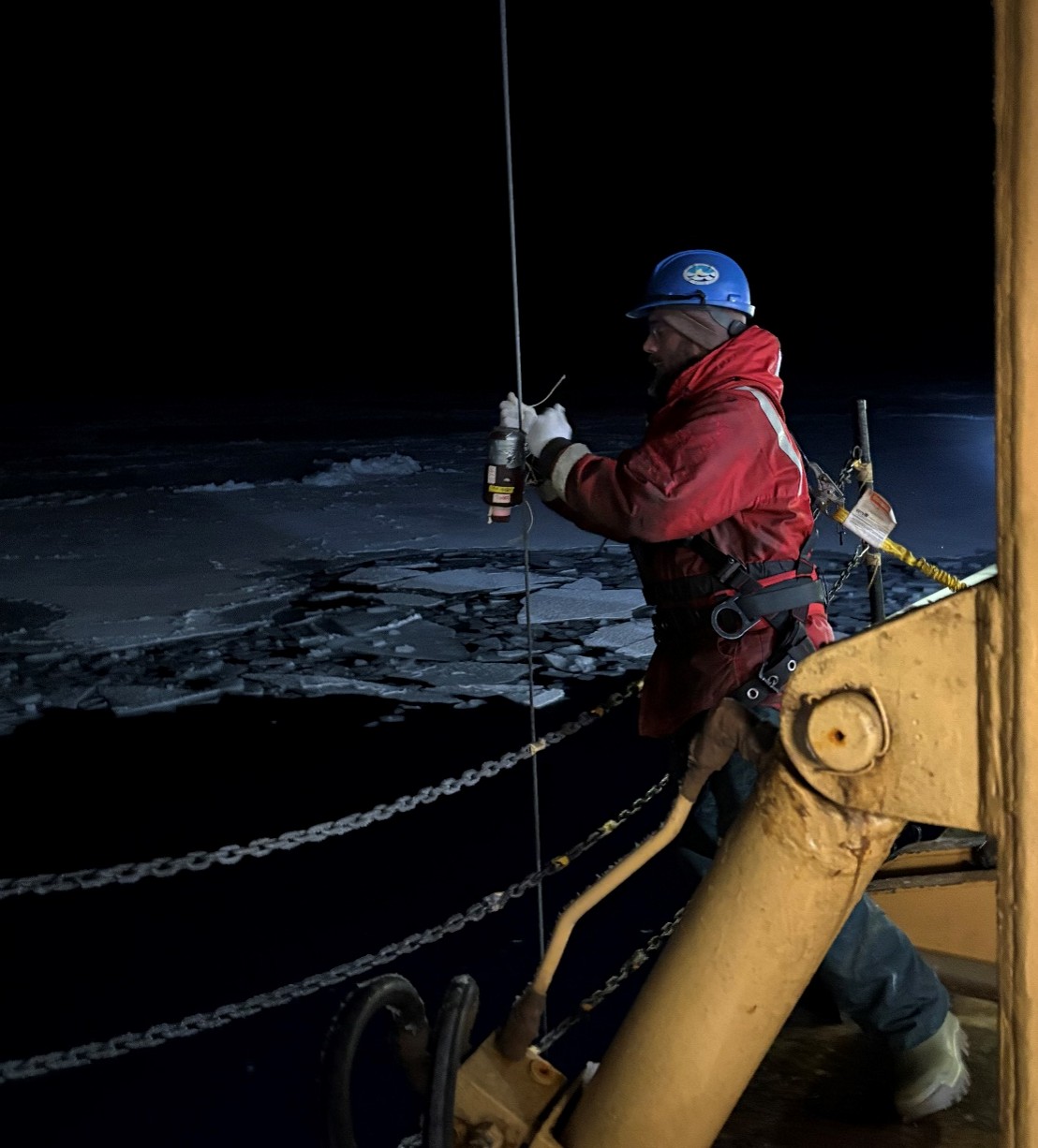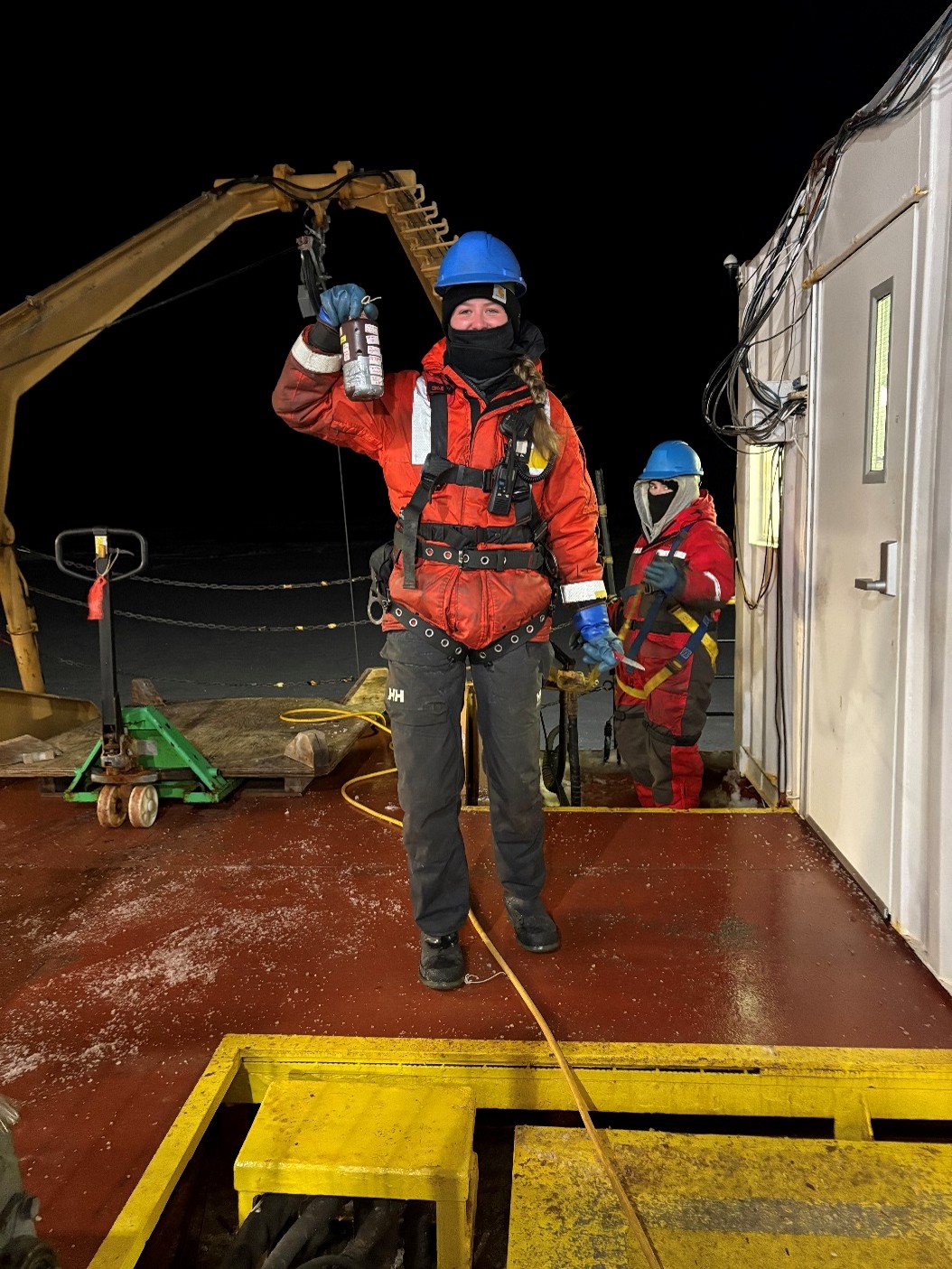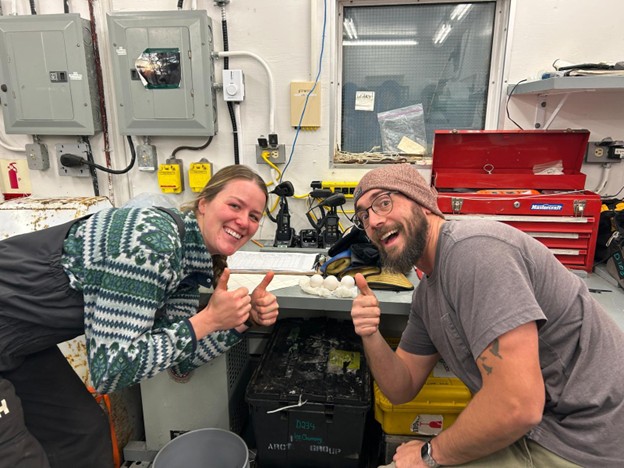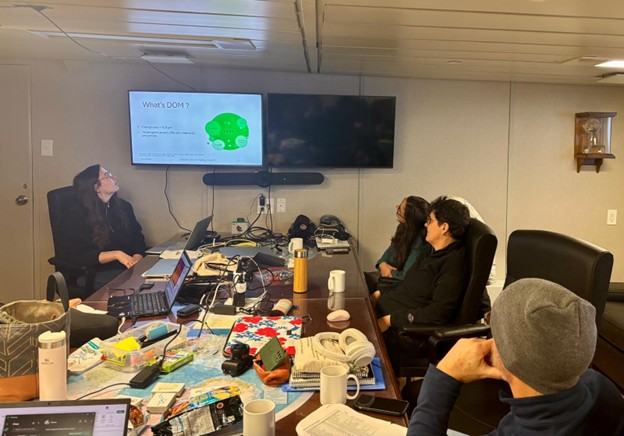Dispatch 30: A special experiment for our last CTD cast!
Jennifer Kosty (Yale University)
October 18, 2025
15:00 local, 71.33◦N, 135.30◦W
Conditions:
- Cloudy
- 40% sea ice cover
- -5◦C
- Sunrise: 18-Oct-2025 10:38
- Sunset: 18-Oct-2025 18:52
- Day length: 8 hours, 14 minutes
We have officially finished all CTD rosette work on the 2025 BGOS/JOIS expedition! The night watch braved the blistering cold and windy weather to complete our 65th and final rosette cast around 2 am. This cast will not only be remembered as the final cast of this year’s science program, but also as the cast which answered an important scientific question we’ve been pondering – would an egg be able to survive a journey to the bottom of the ocean? Members of the night watch posed this question a few weeks ago, and we’ve been debating ever since. We decided to put it to the test by sending a few eggs down with the rosette on our final cast. Chris Clarke used an old chlorophyll sampling bottle to construct a capsule for the eggs’ journey. He drilled several holes in the bottle to prevent it from being crushed under the weight of the ocean and filled any extra space with foam and paper towels. We then attached the egg capsule to the CTD wire about 150 m above the rosette to avoid sample contamination in the case of an egg explosion. We said goodbye to the eggs, and they began their long, cold journey to the bottom of the Arctic Ocean (3200 m deep!) and back. Around 2 hours later, the egg capsule returned to the ocean surface, and night watch leader Paige Hagel removed it from CTD wire. We were thrilled to discover that all 3 eggs survived their journey – the debate is finally over!
The rest of the day was spent wrapping up science operations. The on-board analysts continued to process samples that have been collected over the past few days. At 11 am, we met for the daily science meeting, where Magali Pucet gave an excellent presentation on her PhD research. Magali is using dissolved organic matter (DOM) data collected on the past 4 BGOS/JOIS expeditions to track freshwater runoff, which includes vegetation breakdown, found in the Canada Basin and James Bay. While the rest of us were enjoying a dinner of grilled prime rib/tofu steaks, baked chicken breast, and baked potatoes, Takuji Waseda deployed the 48th and final expendable CTD (XCTD) probe, marking the end of data collection on this year’s cruise! Tonight, we are steaming towards Tuk Peninsula, with the hopes of recovering two buoys that appear to have washed ashore there tomorrow. We will then begin the long steam back to Cambridge Bay!
